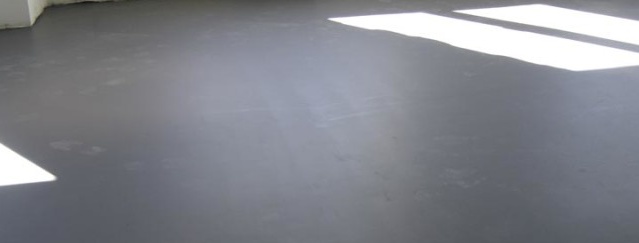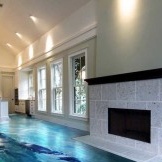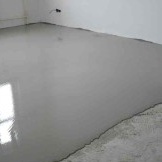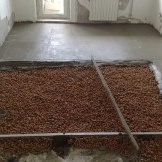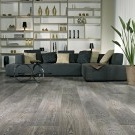Mixtures for floor screed: types and consumption
Sadly, but it turns out that even in the newly-built mnogotazhki not find even floors. Quite often, construction crews do not pay due attention to floor leveling, as a result of which hollows and bumps on the floor surface of unrepaired apartments are common. Why are there builders, often even newly-minted owners do not immediately pay attention to such shortcomings of their home, the problem is acute only when it comes to floor finishes. This is where the so-called mixes for leveling the floor will be needed. Because it is simply unrealistic to lay parquet, laminate or linoleum on such an uneven surface. With tiles, however, a slightly different story, here you can smooth the surface with glue, but this is wrong and expensive.
Types of Mixtures
All mixes for floor screed are divided into two types:
- self-leveling, spreading and independently accepting the exactly horizontal position of the mixture; One of the types of solutions of such mixtures can be applied up to 20 mm thick. Their intended purpose is reconstruction. Such compositions are usually used with a fiberglass mesh. The surface is poured into small sections, to align large surfaces apply slats to divide the area into sections. Another type of self-leveling mixture is a mixture with a layer of up to 5 mm. Such a mixture is truly self-leveling, it is poured on the entire surface, and it takes an ideal position. To achieve the ideal result without cracks on the surface, the proportions during kneading and the layer thickness should be strictly observed.
- mixtures to be leveled with a spatula. Such mixtures are used for the first leveling layer when the floor is very lumpy. In fact, these are rough mixes for screed, which are used to create slopes and in the manufacture of underfloor heating. They work with these solutions using a spatula, and call them self-leveling only conditionally.
Calculation of the consumption of the mixture for floor screed
To calculate the mixture for screed the floor surface, you need to make some calculations. With a layer thickness of 1 mm, 2.2 kg of dry mix is used per 1 square meter, the value of 2.2 must be multiplied by the value of the average floor drop. To calculate this value, the heights and depressions of the floor are measured relative to the zero value, the smaller is taken away from the larger and divided by 2. After making the calculations and determining the required layer thickness, it is possible to determine which mixture is suitable for this floor.
It is worth noting that the mixtures for bulk floor this is not the same as surface smoothing mixes. Increased stability of bulk floors allows you to use them without finishing, but in the case of leveling mixtures, subsequent finishing is required.

